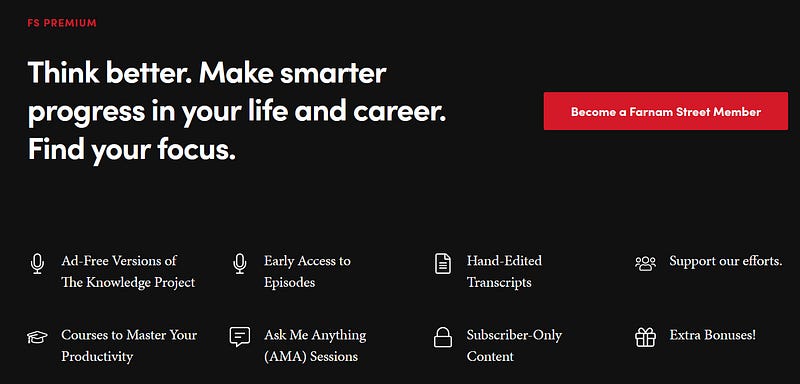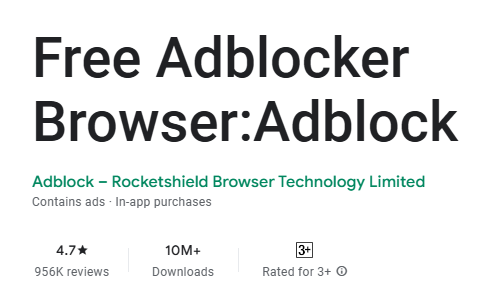Given a Chance to Choose Between an Ad-Blocker and an Antivirus
I’d pick an ad-blocker anytime
The newest, sleaziest sales strategy is built to annoy.
First, they get you hooked. Then they run excessive ads at the beginning, midway, and towards the end. Finally, every time you log in, they offer you a deal that will prevent you from seeing ads.
Genius.
I had already written about this a while back. Once switching costs become difficult, they make you a deal you would never say no to. The ultimate closer technique.
It’s now everywhere.
Once you see it, you can never unsee it

The Chicago Bulls logo is a good example of what you can’t unsee after you’ve seen it. Flipped, it looks like a robot intensely reading a book. Others have given NSFW examples of what the image could be, but we need not go there.
Once you notice a phenomenon, if it’s well executed, you can’t unsee it. You begin to notice it everywhere. Like gamification. Once I learned about it, I saw it everywhere, not excluding online writing.
About this sales gimmick, I started noticing some features ten years ago. At the time, I wanted to be like Hundred Eyes, the Marco Polo martial arts guru. My art would be reading.
I wolfed down every article I could find from Farnam Street. Shane Parish ushered me into a world of mental models. He then introduced me to Charlie Munger, and I was hooked.
I became addicted to their regular articles. Back then, the contrasting background colour was yellow with the occasional black. They had clustered the mental models into the canonical subjects taught in school. Today, they have adjusted the categories into a more practical guide.
Five years later, I decided to listen to all their podcasts, since I had time during the COVID-19 pandemic. At the beginning, Shane would urge the listeners to upgrade to paid subscriptions, which would be ad-free. I didn’t mind the ads.
But there it was.
Paid subscription to avoid ads.

This is not a litany against Farnam Street. They are an amazing team. I would vouch for their work. But they, too, have noticed how annoying ads can be.
Some of the ads they advertise are also not bad. For instance, they have been vouching for Morning Brew for a long time. I never paid it any mind until I started a newsletter. Compared to the malicious ads we all know, these ones are fairly harmless.
But once you encounter one annoying ad, that’s it. The hatred creeps onto the others. Once I saw it, I couldn’t unsee it.
Today, apps warn you upfront that they have ads. To avoid the annoying pop-ups, they urge you to sign up for the premium version. Just open your App Store to see it.
Ad-blockers, too, have ads. I’m not making this up. The strategy is so effective that the very apps built to block them have them.

Indeed, a premium subscription comes as a means of supporting creative endeavours. But forcing it on people seems intentional. That’s what I have noticed from YouTube.
I’m a big basketball fan. I don’t have the time to watch the entire games, so I follow the highlights.
You can see a crazy dunk from afar. But just as the player picks the ball mid-air, an ad pops up. It annoys. I began to think it was intentional. My hunch was not that far off from the truth.
I’m also a fan of music. My sister, who introduced me to all sorts of genres, once shared a priceless tip. If you don’t want to be disturbed by YouTube ads, simply curate your playlist, then let it play in the background by switching to another tab.
It worked like magic. My music would play uninterrupted. But I guess they started noticing this. So now they would wait within the hour and release a pop-up asking: Are you still watching?
Why should it bother them whether I’m listening or not, mmh?
Anyway, you would switch to that tab and click okay. Then an ad would run. Sometimes, it would be intentional, such that a silent transition about YouTube would play after a song, but it wouldn’t move to the next song until you clicked on the next song.
Other times, just when a song would be getting to its climax, at that point when you begin to sing along with an extra bump in your energy level, it pauses. The timing was so uncanny I couldn't shrug off the coincidence.
Meanwhile, a small pop-up would appear at the bottom left, urging me to subscribe to a YouTube Premium account. It’s hard to shake the feeling that they were intentionally pushing my buttons.
You can opt out, but few have that technical know-how. Opt-out options are designed to trap rather than release users. Very intentional.
Initially, the ads would have a ‘skip ad’ button, but it evolved to ads that don’t have such a button. They squeeze the few seconds in the middle of a video, intrusively. Pushing your buttons. Annoying.
Recently, when my friend told me that they had partnered up to get the premium version, he offered to add me to the family. Now I have a YouTube Premium account. As the Dilated Peoples sang, I couldn’t live my life that way. They made their kill.
It’s now everywhere. As I had mentioned previously, the issue is the switching costs. Once you become hooked, the addiction strongarms you into their preferred offer.
I have to remind myself about Hanlon’s razor whenever I see some ads, but they keep making it hard. I don’t think it’s ignorance. I think it’s malicious. By asking you to click whether the ad was useful or not, they don’t ask you which alternative you’d prefer.
I’d wager that if YouTube released its data on these ad responses, an overwhelming majority would lean towards the dislike end of the Likert scale.
Since I’m used to YouTube Music, they know I’m hooked. Switching to a different platform is costly. An alternative platform doesn’t know my musical taste the way YouTube does. But I want seamless streaming. So they throw in their offer.
It almost always hits.
Warren Buffett knows that you shouldn’t always swing your bat. You should wait for when the ball is in the right trajectory, headed towards your bat, for you to make the big swing.
What most platforms have done is engineer this trajectory. Once you become a regular user, a switch can be psychologically costly. They then annoy you to the point of considering their low-ball offer.
What’s worse is, the low-tier subscription does not guarantee the elimination of ads. Simply put, they keep making it hard for you to win.
Ad-free browsing is now safer than having an antivirus
I was a campus student once. A Kenyan campus student.
So I know how to bypass some subscription models. Plus, I was broke. I needed to find a way out.
But, I also know that there are people who deserve the paid subscription. I remember reading one article by Erik Hoel that was so well written, I sent something small at the end, some financial incentive for him and The Baffler to continue doing the Lord’s work.
Most websites are today covered with ads from top to bottom. In exhibitionist spirit, they flash before you without any warning. Some of these websites have programmed delays such that by the time you scroll down, you would have unintentionally clicked on an ad.
Others have ads curated to match the content you are reading, so you cannot tell if they are indeed ads or simply an extension of the article. The ambiguity clears when you click on it. It’s usually an ad.
Today, most ads carry malware. A click is enough. And they are in. No, an antivirus does not save you. Websites free of ads do.
Before moving to Medium and then Substack, I tried including ads on my WordPress website. I was desperately watching the ticking time bomb on my account, gradually heading towards brokeness. So I switched on the ads and hit the refresh button.
I cringed.
My small intestines switched positions, and the large intestines filled up with gas. My nose blocked, and my eyes began to tear up. My fingers flickered and facial muscles twitched.
In less than a day, I couldn’t stand it. As the bridge goes:
I know there’s things in my life
That I’ma let go starting tonight
I reverted to the clean ad-free version.
It’s why I like to sing the praises of Medium and Substack. They are ad-free. You can get all forms of articles, but be guaranteed that you won’t encounter ads as often as you might on other websites.
A subscription offer helps. That’s what Substack does.
Enshittification can also happen. One notable feature is evidenced when the website owner(s) include in their footers an ad that they acknowledge to have supported the newsletter.
Admittedly, I considered this option. I wanted a way to make something small from my writing. The model was as simple as building an audience and then offering a small cut to agencies that would wish to advertise.
It never sat well with me.
As already mentioned, some websites wouldn’t want to inundate their readers and visitors with meaningless ads, which would not benefit the kind of people who frequent the site.
And I have always questioned whether my readers would support my work because I simply want to keep it free of ads. I like my articles clean. I think readers do too.
Presently, it’s the only offer I ask of them, a pledged support for a site that prevents it from tipping into an ad-suffocated page.
To date, I have one big supporter — my full-time job. It's the Sam to my Frodo. I hope to get more readers who support it, if not that much, the weeny bit, enough to sustain the ad-free oasis of online articles. Until that time comes, as Kanye raps:
I just know when I’m getting one, the other’s getting away
This way
‘The other’ is the money.
I don’t know if my articles are addictive, even mildly. I honestly get little feedback on that. But I don’t plan on annoying my readers.
The more I keep my writing ad-free, the more I deny myself a chance to make some money. But you know what?
They say what they like, but I’ve been that way.
Ads are not a safe space to play, yet they flood the internet. An ad-free space is much safer than a computer loaded with all types of antivirus software.
It’s like saying, rather than regulate the speed of a car, we can load it with all types of brakes, safety belts, and airbags. Then ensure the driver has extensive insurance.
Safer beats sorry.
In keeping with the oath I took before becoming a doctor, I prefer to do no harm.
What I’m trying to say is…
A website flooded with ads…
Can’t live that way
I know a few good websites with good ads. The curators are kind enough to show the difference between the end of their work and the beginning of an ad.
A site without ads is like online heaven, only because the alternative is no different from a landmine.
Given a chance to choose between an ad blocker and an antivirus, I would pick an ad blocker any day.
But better than downloading an ad blocker is securing a website or page free of ads.
And between an ad blocker and an ad-free page, I’d pick the latter. That’s what I’m offering my readers without the hustle of annoying them first.
This song inspired some of the lines used in this article. Source — YouTube




